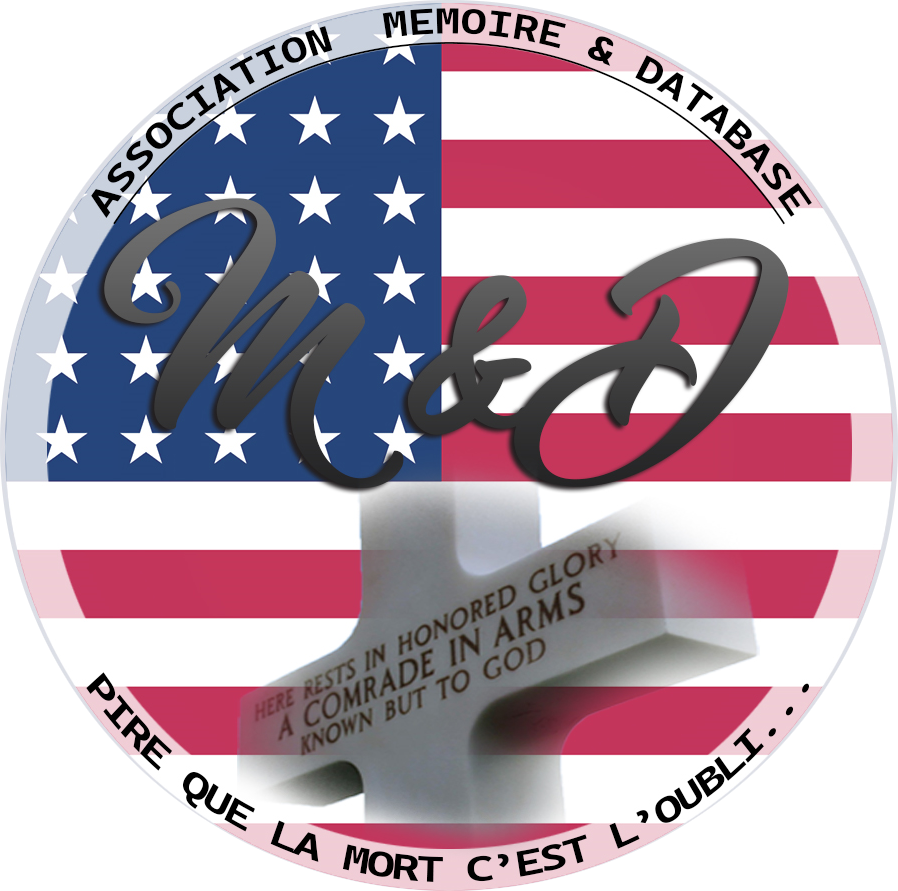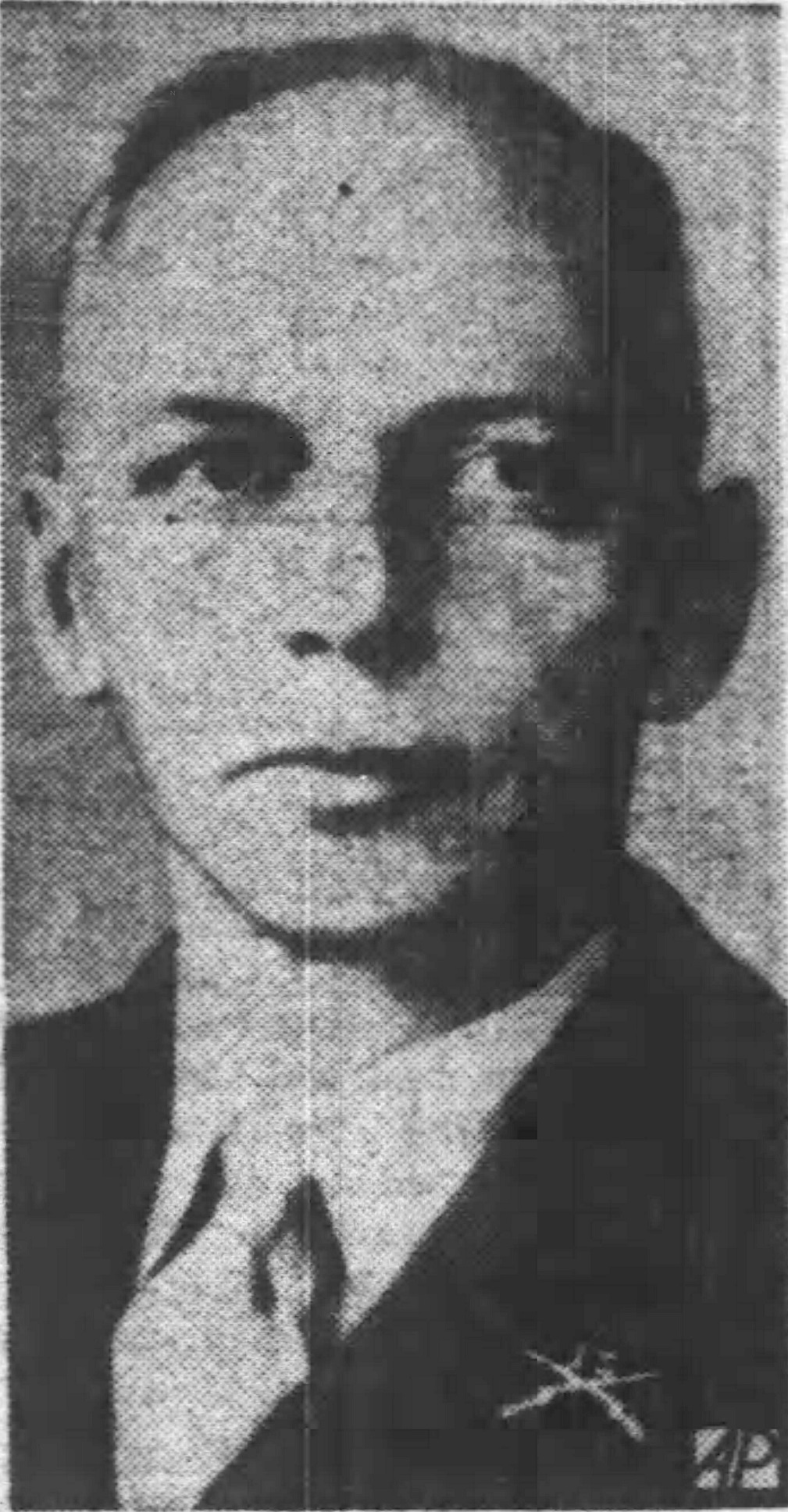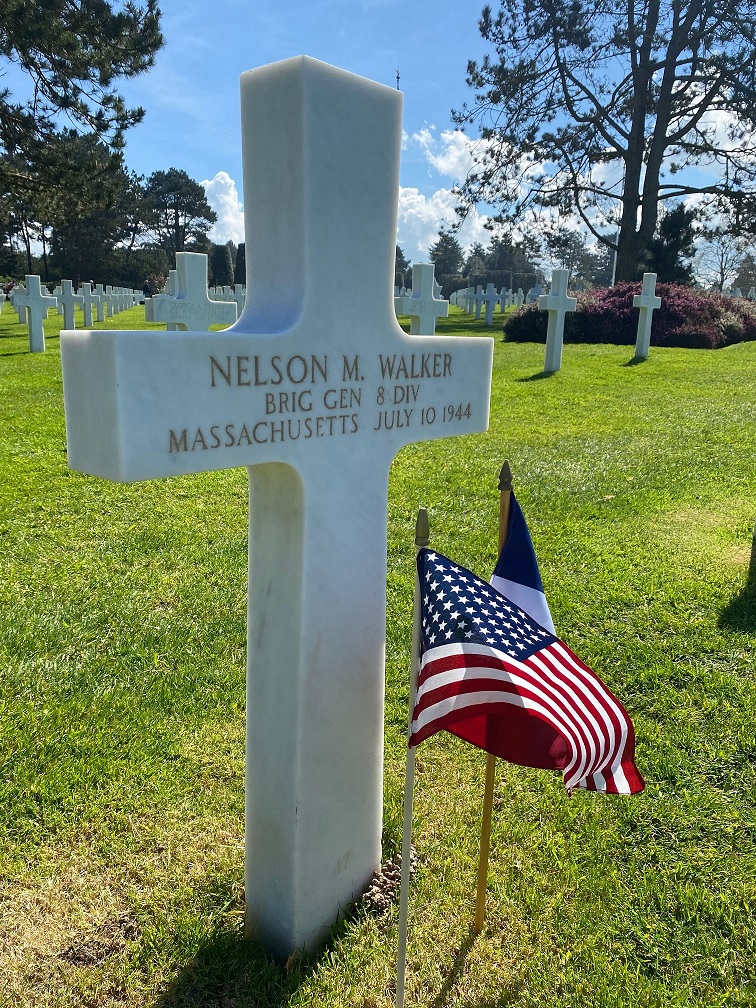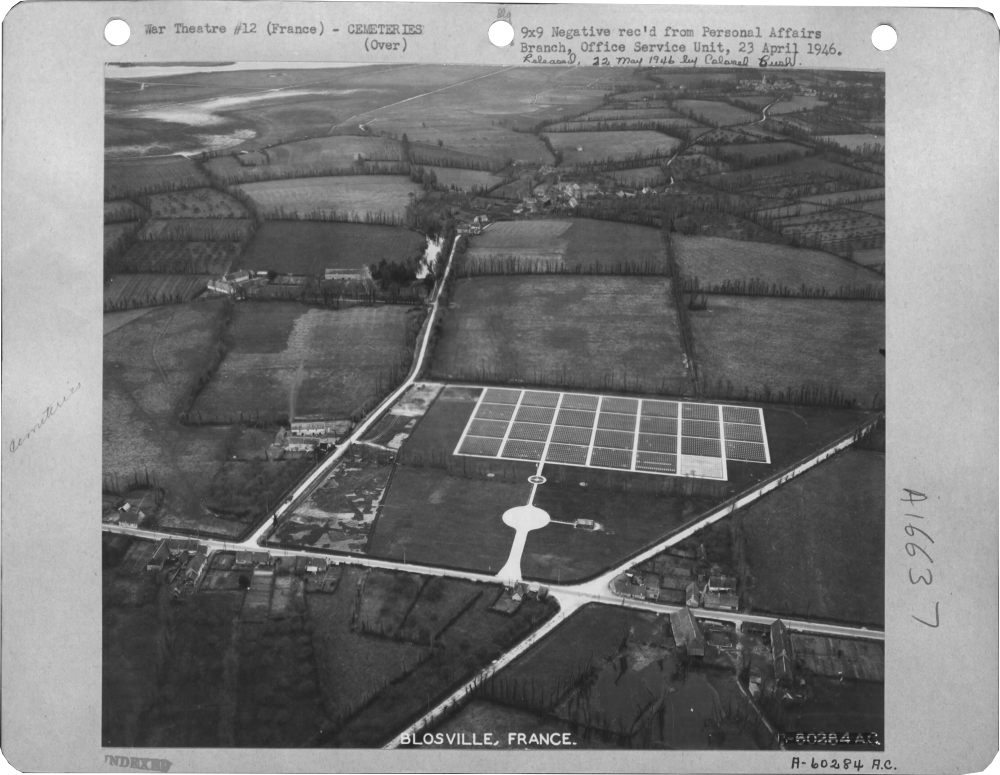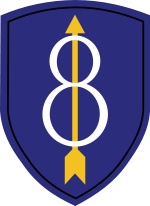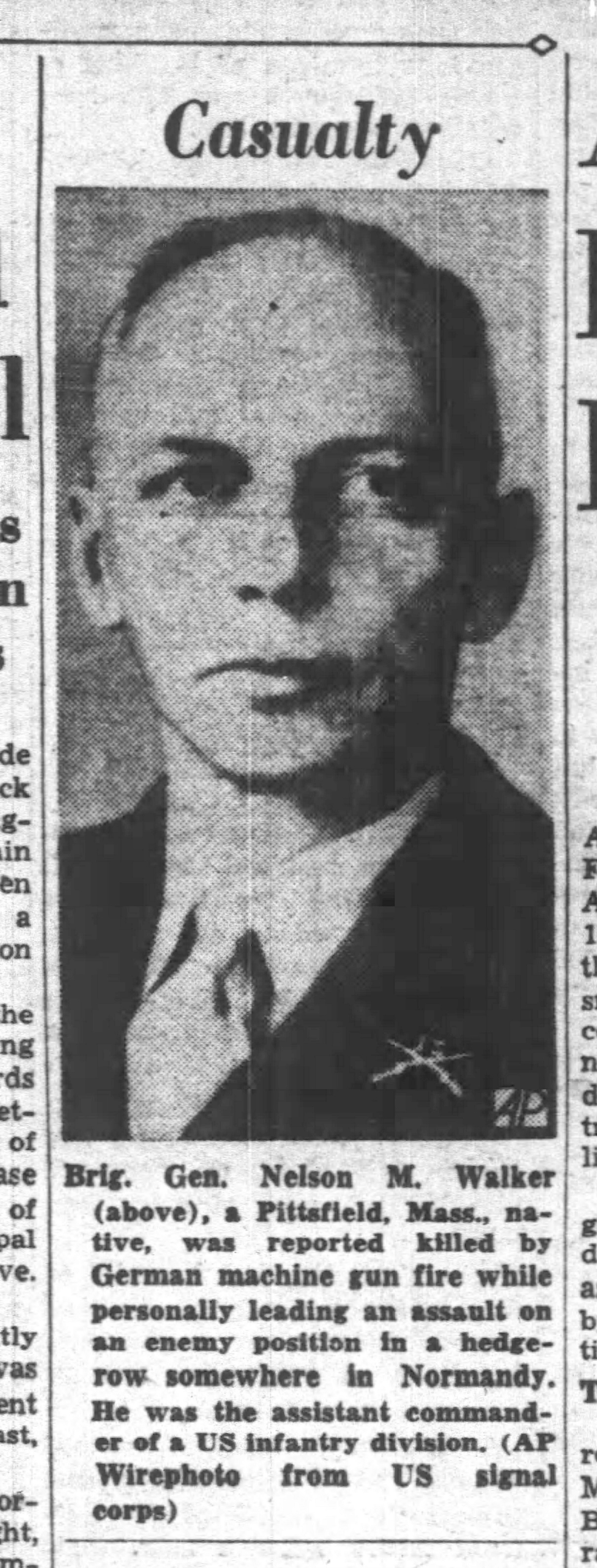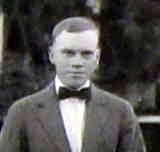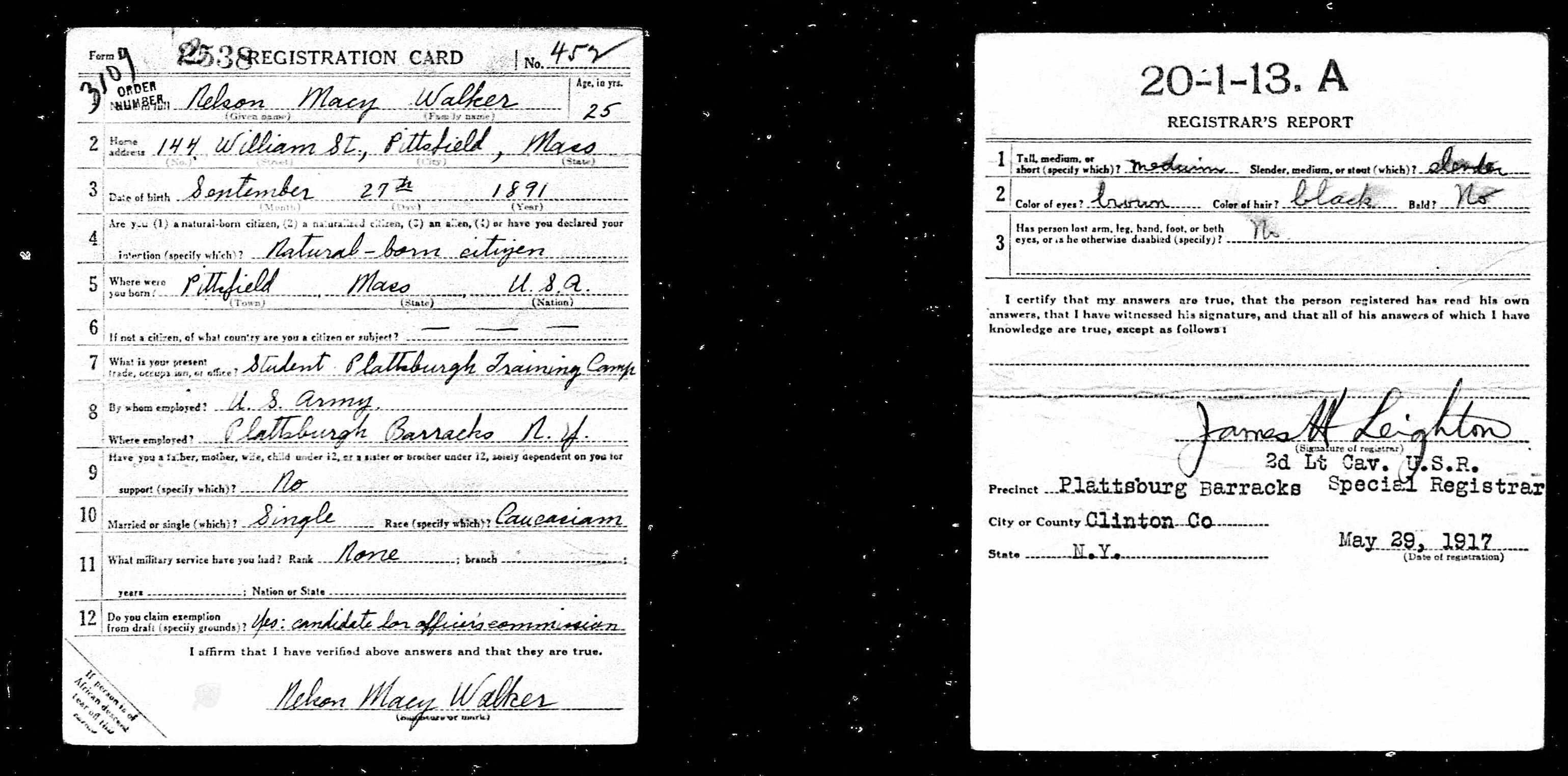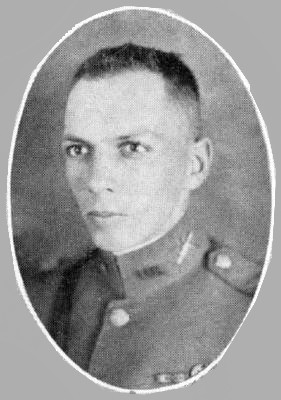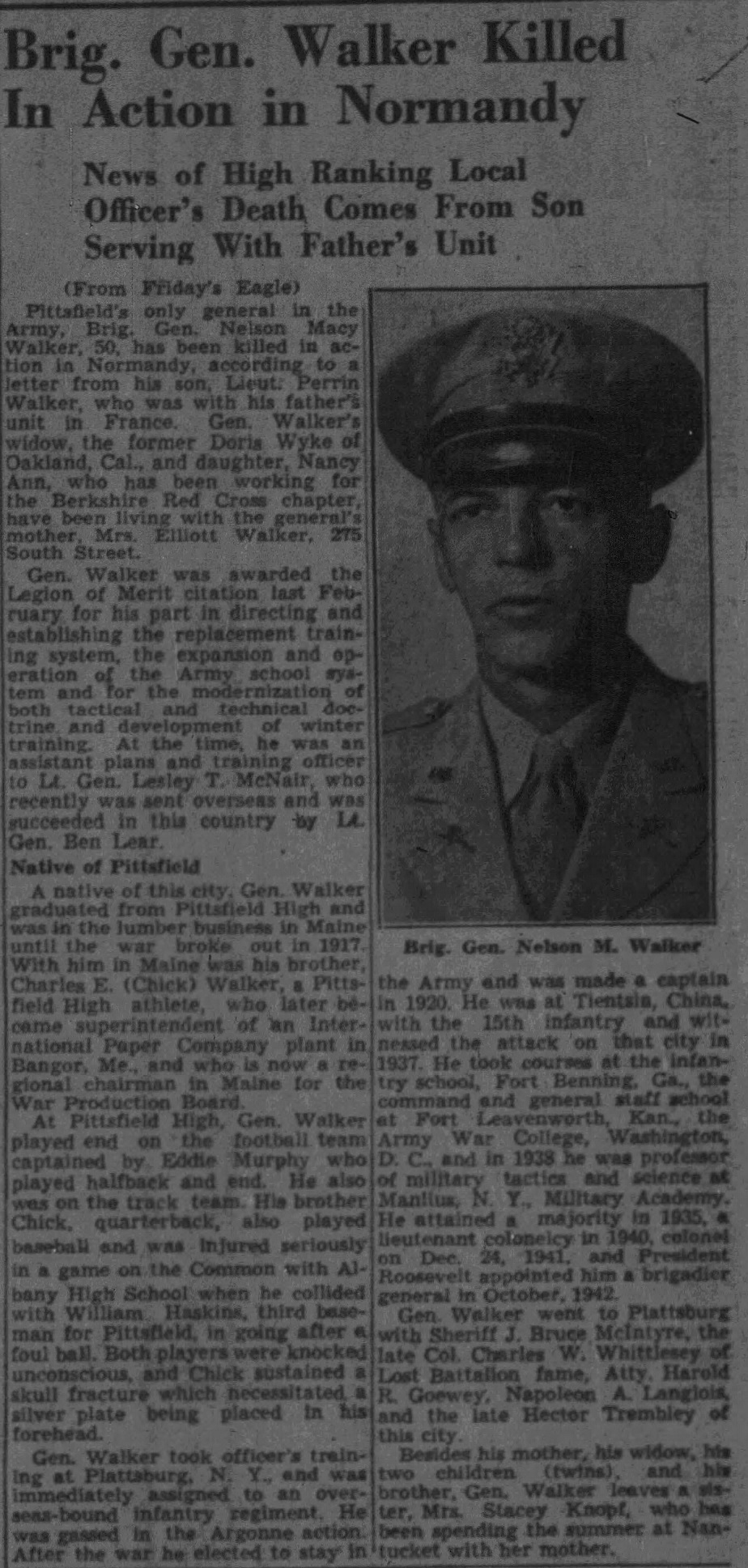|
Nelson Macy WALKER
| ||||||||||||||||||||||||
|---|---|---|---|---|---|---|---|---|---|---|---|---|---|---|---|---|---|---|---|---|---|---|---|---|
|
Source : usafdo
| ||||||||||||||||||||||||
| NUMBER OF SERVICE | O-007642 | |||||||||||||||||||||||
| AGE | 52 yo | |||||||||||||||||||||||
| DATE OF BIRTH | 27 septembre 1891 Pittsfield, Berkshire County, MASSACHUSETTS | |||||||||||||||||||||||
| ENLISTMENT STATE | MASSACHUSETTS | |||||||||||||||||||||||
| FAMILY | Son : Perrin Walker | |||||||||||||||||||||||
| RANK | Brigadier General | |||||||||||||||||||||||
| FONCTION | Assistant Division Commander of the 8th Infantry | |||||||||||||||||||||||
| JOB BEFORE ENLISTEMENT | Militaire |  | ||||||||||||||||||||||
| DATE of ENLISTEMENT | ||||||||||||||||||||||||
| REGIMENT | Headquarters | |||||||||||||||||||||||
| DIVISION | 8th Infantry Division | |||||||||||||||||||||||
| DATE OF DEATH | 10 July 1944 |
Source : Maxime RIVIERE | ||||||||||||||||||||||
| STATUS | KIA | |||||||||||||||||||||||
| PLACE OF DEATH | La Haye-du-Puits | |||||||||||||||||||||||
| CEMETERY TEMPORARY |
CEMTERY TEMPORARY of Blosville N°3508
| |||||||||||||||||||||||
| CEMETERY | NORMANDY AMERICAN CEMETERY of Colleville | |||||||||||||||||||||||
| GRAVE |
| |||||||||||||||||||||||
| DECORATION |
| |||||||||||||||||||||||
| ||||||||||||||||||||||||
| STORY | ||||||||||||||||||||||||
|
US Army Brigadier General, he was killed in action during the battle for the hedgerows following the D-Day landing of 6 June 1944. At the time of his death, he was the Assistant Division Commander of the 8th Infantry Division. Nelson Walker was born in Pittsfield, Mass, and was a graduate of the Pittsfield High School, class of 1911, where he was a player on the school's baseball team and a runner on the track team. When World War I started up, Walker enlisted into the Army, and was sent to Officer's Training Camp at Plattsburgh NY, becoming commissioned a Second Lieutenant of Infantry in 1917, just prior to the US Declaration of War in April. While fighting in the Argonne Forest in France, he was gassed and hospitalized, for which he would later receive the Purple Heart medal. Following the end of the war, he decided to remain in the Army, and was promoted to Captain in 1920. Promotions between the wars were slow, with only one promotion, to Major, during that period. As American participation in the coming events in Europe directed a buildup of military forces in the early 1940s, he was soon promoted to Lieutenant Colonel in 1941, and a year later to full Colonel. Soon afterwards, he was again promoted, to Brigadier General, in 1942. He would develop a winter training program for soldiers, and helped to modernize both technical and tactical training, for which he would receive a Legion of Merit in 1944.
|
Source : usafdo
| |||||||||||||||||||||||
|
Source : usafdo
|
Source : usafdo
| |||||||||||||||||||||||
|
Seeking combat, he was appointed Assistant Division Commander of the 8th Infantry Division on 15 February 1944, then in Northern Ireland training for the Normandy Invasion. The division landed at Normandy on July 4, 1944, and immediately went into combat operations against the Germans in hedgerow country. When the 121st Infantry Regiment of the 8th Infantry Division was held up by heavy casualities, General Walker went forward to the regimental headquarters to see if he could get the unit moving forward. The Division Commander, MG William C. McMahon, believed that their orders to perform direct frontal attacks on the hedgerows was causing the higher casualties and slower advance. When BG Walker arrived at the front line to investigate, he found that Company E, 121st Regiment had been pinned down for two days by heavy German fire, just south of the main road between La Haye Du Puis and Carentan. The 121st appeared highly disorganized. BG Walker joined them for evening meal, and then went to Company E, to see if he could get the unit to move forward. He was assisted by two aides, LT Stephen S. Fry and LT Emmet Fields. Taking a platoon with him, he led them through gaps in two hedgerows, approaching where small arms fire was heard. Cutting through another gap in the next hedgerow, the men were suddenly met with heavy automatic fire from Germans and immediately six of the soldiers, including BG Walker, were wounded. LT Fry thinks General Walker was hit with the first shot. Both Fields and Fry crawled along the hedgerow and took cover behind a high dirt mount. Fry went back to find an aid man to help the general while Fields remained in cover to guide the aid men when they returned. It took some time but Fry returned with a field ambulance and three aid men, with whom they brought General Walker into safety on a stretcher. On the way back to the aid station, the medics administered plasma. The bullet had penetrated the General's right thigh and hip socket, breaking his pelvis, and causing great loss of pain. He was wounded at 11:00 pm, and would die at 1:30 am the next morning, 10 July 1944.
|
Source : 1-22infantry.org
| |||||||||||||||||||||||
|
Source : usafdo
| ||||||||||||||||||||||||
|
Source : Maxime RIVIERE
|
On the morning of July 10, both regimental commanders of the 121st Regiment and the 28th Regiment of the 8th Infantry Division refused to advance frontally, believing it to be the wrong method of attack, and both commanders were relieved. Two days later, MG McMahon, the 8th Division Commander, was relieved due to the division's failure to make faster progress through the hedgerows. The division's new commander, BG Donald Stroh, changed the method of hedgerow fighting by side-slipping and flanking movements that did not expose the Americans to the intense German fire, and enabled them to disorganize the German defense. The death of a general officer requires an official Army investigation; 2nd Lieutenant Perrin Walker, the general's son and aide to MG McMahon at the time of his father's death, performed the official investigation. Bio by: Kit and Morgan Benson | |||||||||||||||||||||||
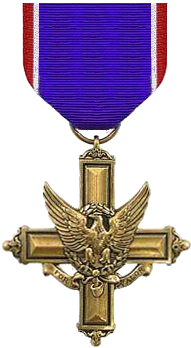 |
Distinguished Service Cross
Headquarters, Ninth U.S. Army, General Orders No. 29 (1944) (Citation Needed) - SYNOPSIS: The President of the United States of America, authorized by Act of Congress July 9, 1918, takes pride in presenting the Distinguished Service Cross (Posthumously) to Brigadier General Nelson M. Walker (ASN: 0-7642), United States Army, for extraordinary heroism in connection with military operations against an armed enemy while serving with the 8th Infantry Division, in action against enemy forces on 9 July 1944. Brigadier General Walker's intrepid actions, personal bravery and zealous devotion to duty at the cost of his life, exemplify the highest traditions of the military forces of the United States and reflect great credit upon himself, the 8th Infantry Division, and the United States Army. SEE MORE RECIPENTS OF THIS AWARD | |||||||||||||||||||||||
Activated/Activé |
Normandy/Normandie |
| 1 Jul 1940 | Days of Combat/Jour de Combat 266 |
| Casualties/Victimes 13 986 | |
Entered Combat/Entré au combat |
|
| 8 Jul 1944 Normandy | |
|
Commanding Generals/Commandants généraux Maj. Gen. Philip B. Peyton (Jun 40 - Dec 40) |
Campaigns/CampagnesNormandy (6 Jun 44 - 24 Jul 44) |
PLAN DE ROUTE DE LA CAMPAGNE - CAMPAIGN ROUTE MAP |
|
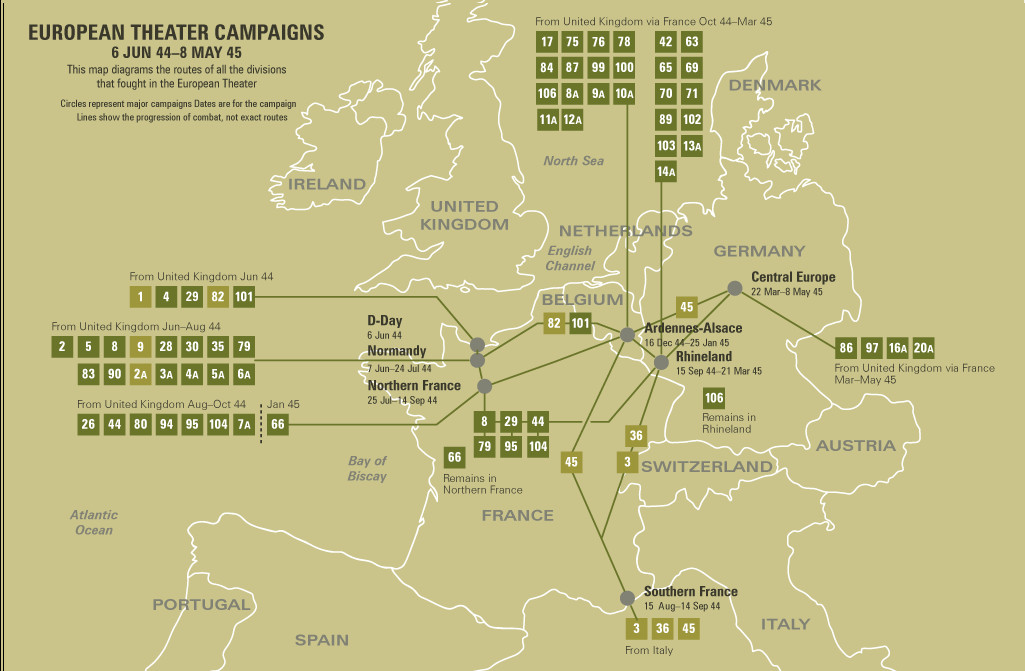 |
|
DIVISION CHRONICLEAfter training in Ireland the 8th Infantry Division landed on Utah Beach, Normandy, 4 July 1944, and entered combat on the 7th. Fighting through the hedgerows, it crossed the Ay River, 26 July, pushed through Rennes, 8 August, and attacked Brest in September. The Crozon Peninsula was cleared, 19 September, and the Division drove across France to Luxembourg, moved to the Hurtgen Forest, 20 November, cleared Hurtgen on the 28th and Brandenburg, 3 December, and pushed on to the Roer. That river was crossed on 23 February 1945, Duren taken on the 25th and the Erft Canal crossed on the 28th. The 8th reached the Rhine near Rodenkirchen, 7 March, and maintained positions along the river near Koln. On 6 April the Division attacked northwest to aid in the destruction of enemy forces in the Ruhr Pocket, and by the 17th had completed its mission. After security duty, the Division, under operational control of the British Second Army, drove across the Elbe, 1 May, and penetrated to Schwerin when the war in Europe ended.
|
CHRONIQUE DE DIVISIONAprès s'être entraîné en Irlande, la 8th Infantry Division débarque à Utah Beach, en Normandie, le 4 juillet 1944, et entre en combat le 7. Traversant les haies, il franchit la rivière Ay, le 26 juillet, traverse Rennes le 8 août et attaque Brest en septembre. La péninsule de Crozon a été défrichée le 19 septembre et la Division a traversé la France jusqu'au Luxembourg, s'est installée dans la forêt de Hurtgen le 20 novembre, a défriché Hurtgen le 28 et Brandebourg le 3 décembre et s'est dirigée vers la Roer. Cette rivière fut franchie le 23 février 1945, Duren fut prise le 25 et le canal Erft traversa le 28. Le 8 a atteint le Rhin près de Rodenkirchen, le 7 mars, et a maintenu des positions le long de la rivière près de Cologne. Le 6 avril, la division attaqua le nord-ouest pour aider à la destruction des forces ennemies dans la poche de la Ruhr. Le 17, elle avait achevé sa mission. Après la sécurité, la Division, sous le contrôle opérationnel de la deuxième armée britannique, traversa l'Elbe le 1er mai et pénétra à Schwerin à la fin de la guerre en Europe. |
| SOURCE INFORMATION & PHOTO | Armydivs.squarespace.com |
|---|
| SOURCE INFORMATION & SOURCE PHOTO | Findagrave.com - Abmc.gov - Newsletter ABMC - 1-22infantry.org - Valor.militarytimes.com |
|---|---|
| PROGRAMMER | Henri, Garrett, Clive, Frédéric & Renaud |


